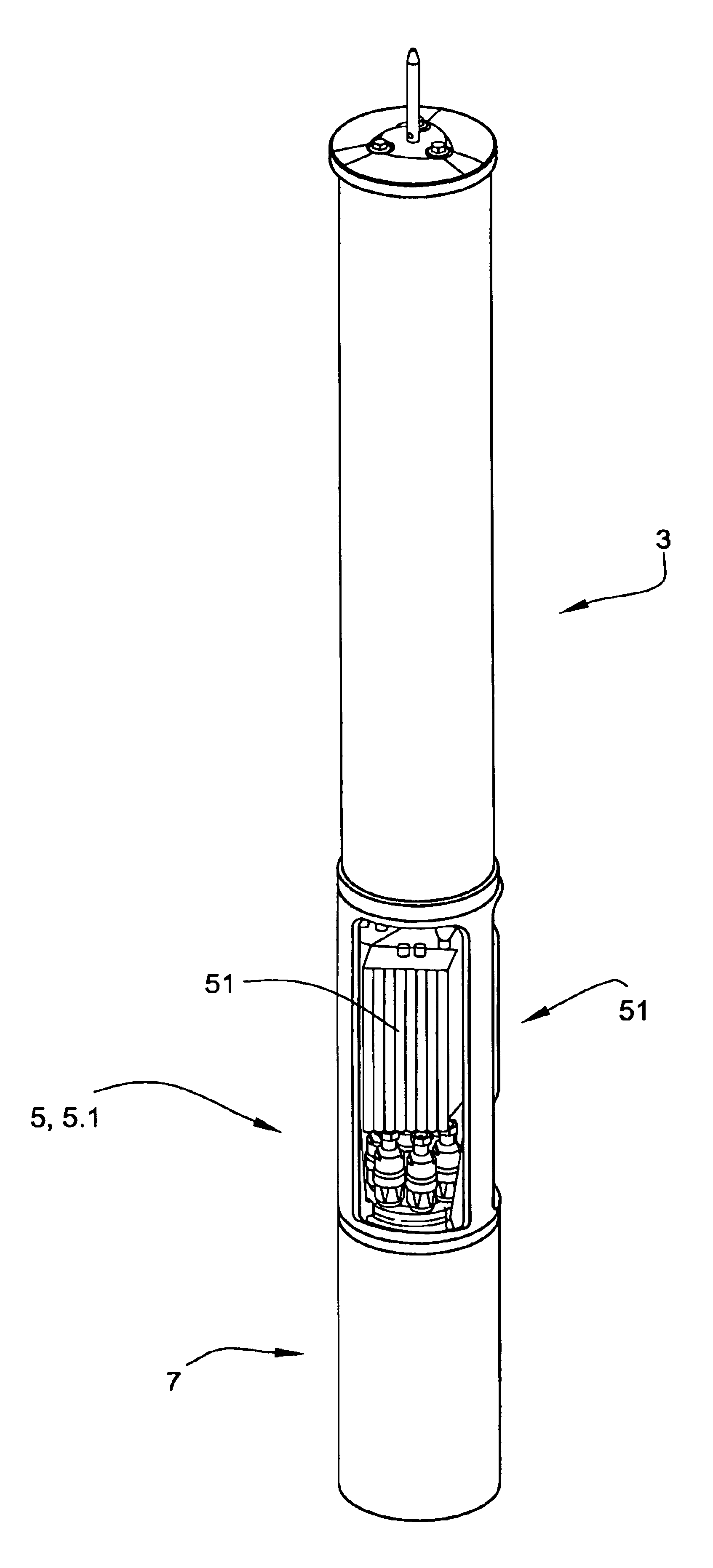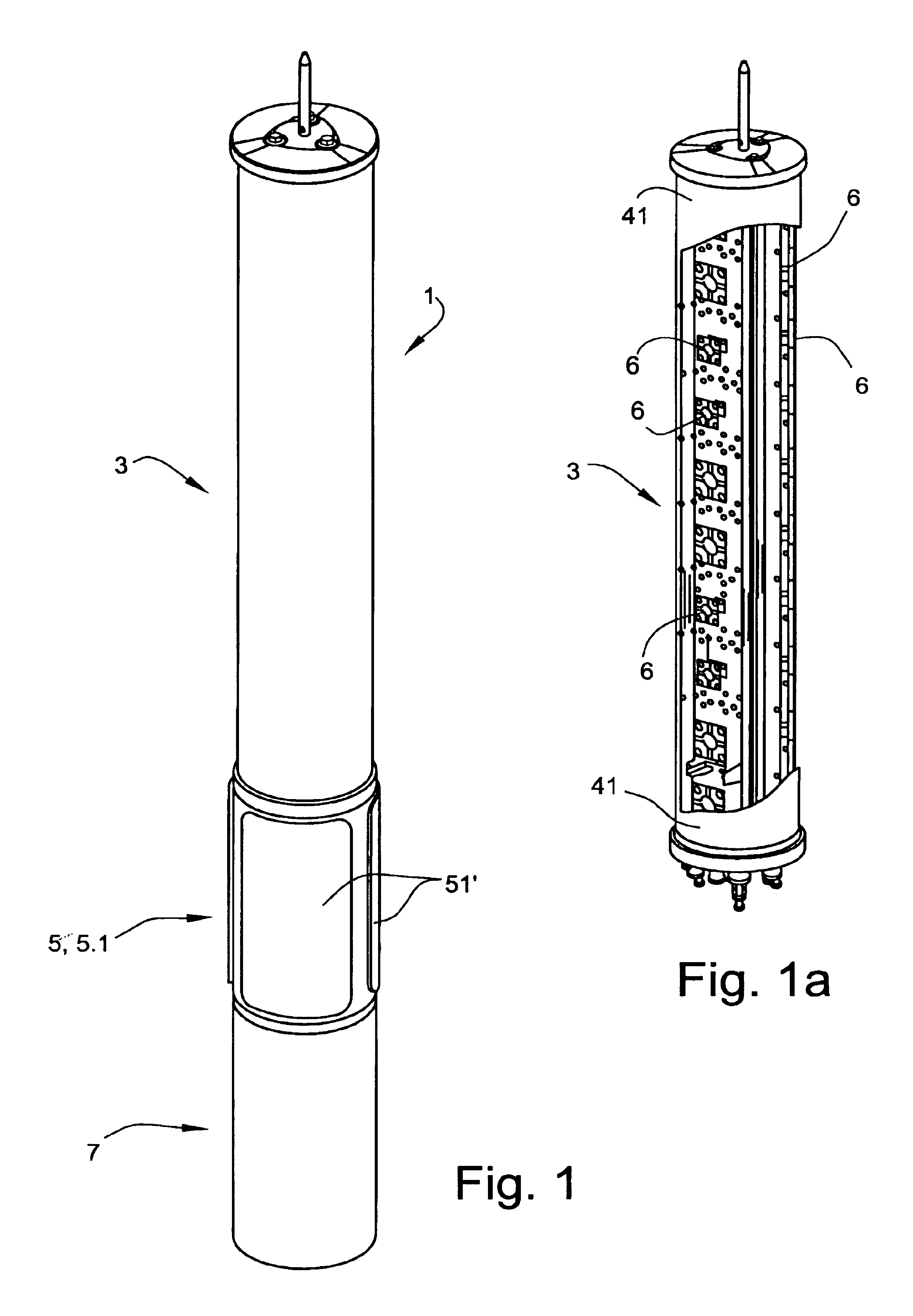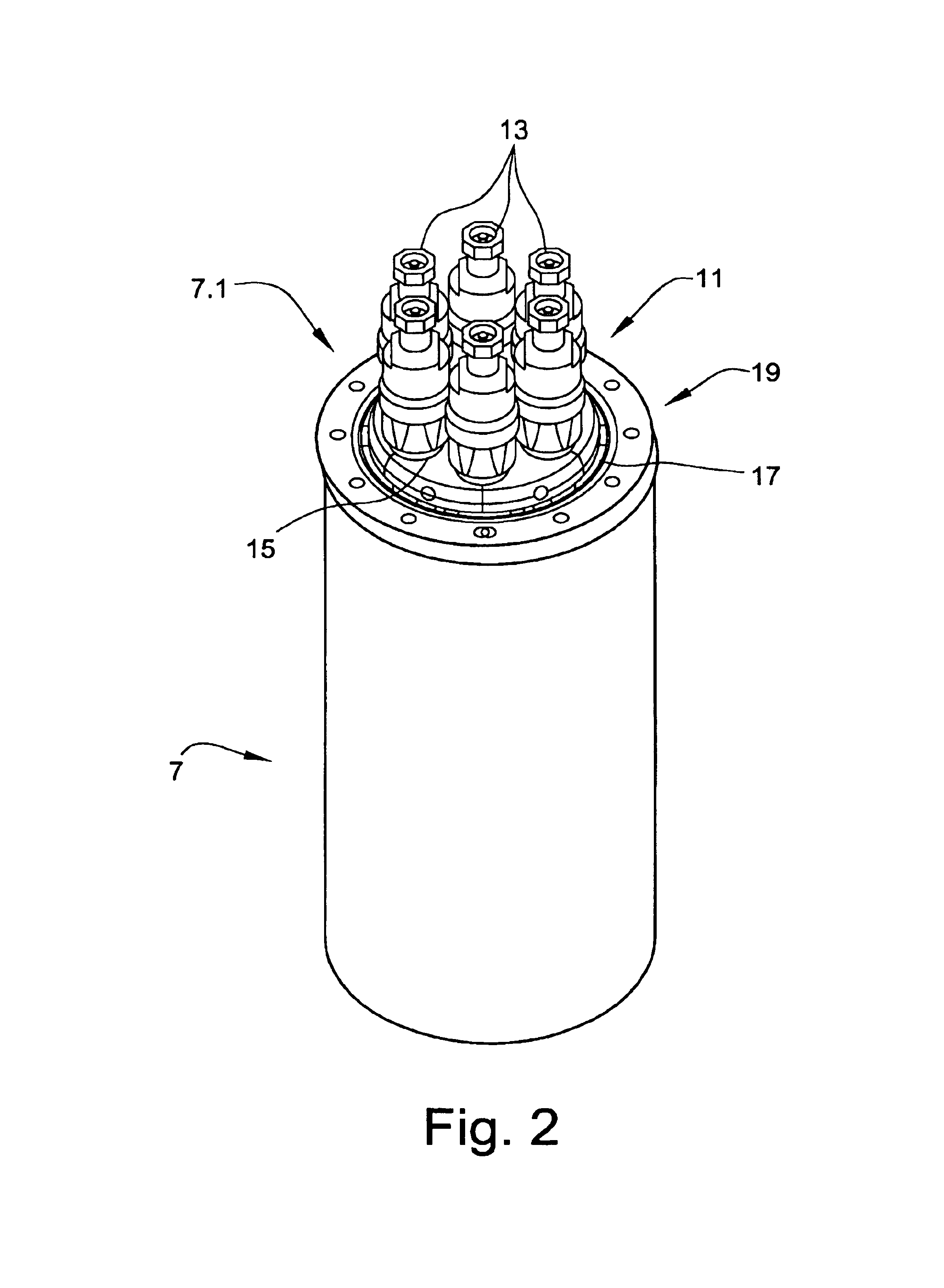Antenna arrangement
- Summary
- Abstract
- Description
- Claims
- Application Information
AI Technical Summary
Benefits of technology
Problems solved by technology
Method used
Image
Examples
Embodiment Construction
[0038]FIG. 1 shows an exemplary illustrative non-limiting schematic perspective illustration of an antenna arrangement 1 as may be used in particular as a mobile radio antenna for a base station.
[0039]The antenna arrangement 1 has an antenna section 3 which is located at the top, and at least one further antenna section 5 which is located underneath it and has at least one service zone 5.1.
[0040]The entire arrangement comprising the upper antenna section 3 and the lower antenna section 5 which is axially adjacent to it is constructed and mounted on an antenna stand device 7, which is used as an antenna base 7. This antenna base 7 need not necessarily be in the form of a pylon as shown in FIG. 1 et seq, but may also have a large or smaller diameter or a different cross-sectional shape, or may, for example, also be in the form of a connecting point at ground level, on which the antenna arrangement 1 is then mounted with the at least upper antenna section 3 and the at least one lower a...
PUM
 Login to View More
Login to View More Abstract
Description
Claims
Application Information
 Login to View More
Login to View More - R&D
- Intellectual Property
- Life Sciences
- Materials
- Tech Scout
- Unparalleled Data Quality
- Higher Quality Content
- 60% Fewer Hallucinations
Browse by: Latest US Patents, China's latest patents, Technical Efficacy Thesaurus, Application Domain, Technology Topic, Popular Technical Reports.
© 2025 PatSnap. All rights reserved.Legal|Privacy policy|Modern Slavery Act Transparency Statement|Sitemap|About US| Contact US: help@patsnap.com



